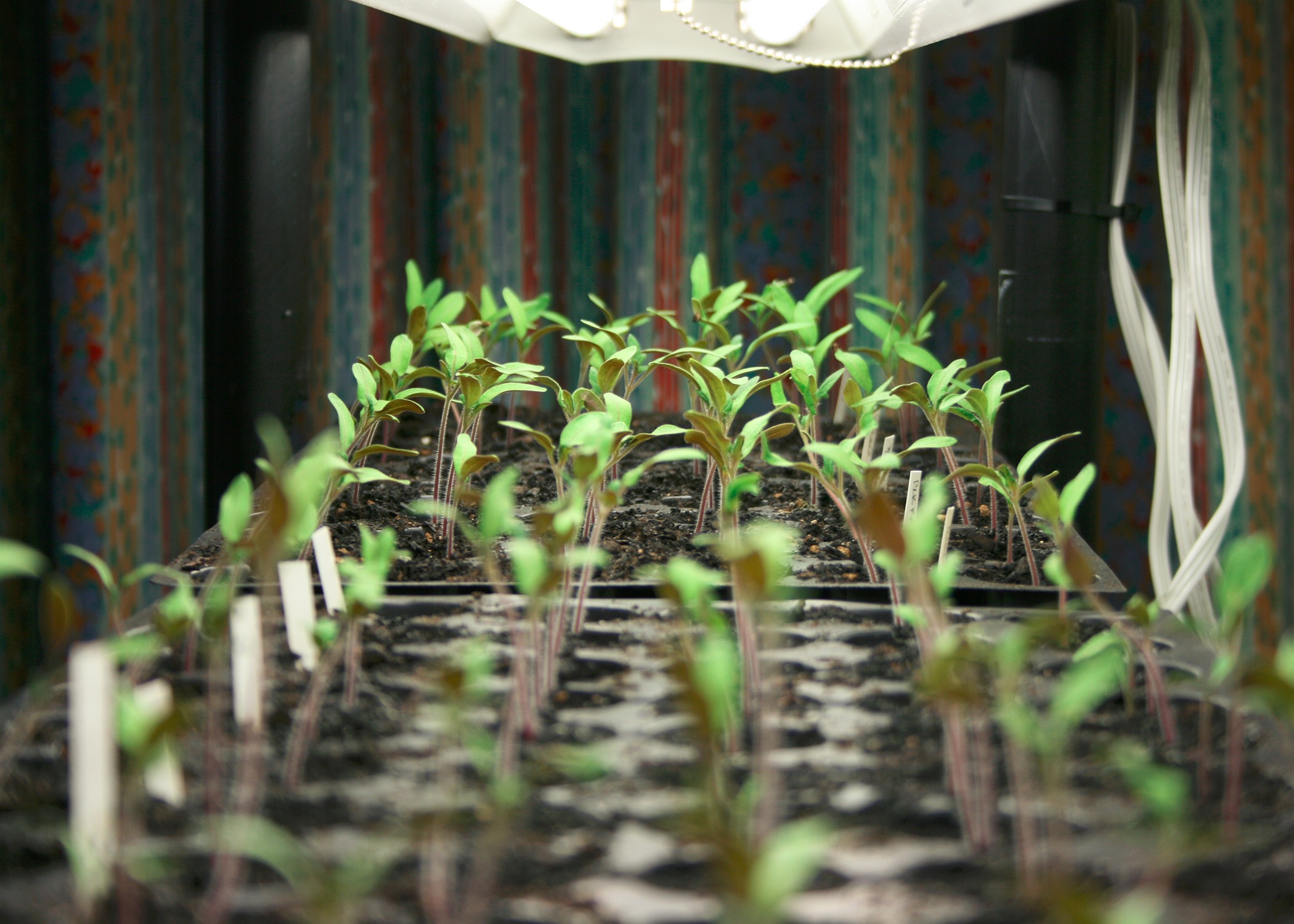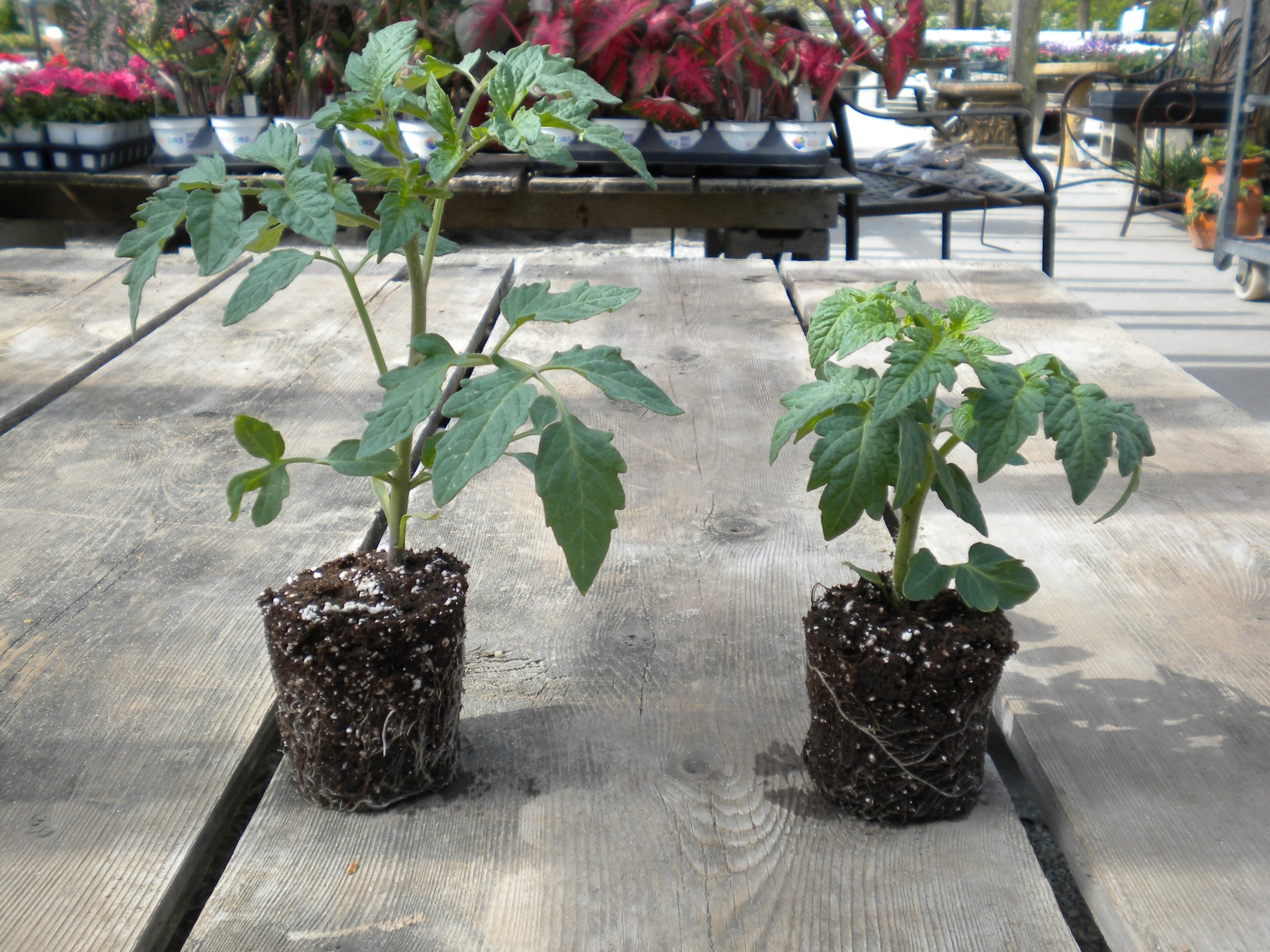Starting Seedlings for the Garden - January 30, 2019 Jeff Schalau, Agent, Agriculture & Natural Resources University of Arizona Cooperative Extension, Yavapai County Now is a good time to start warm-season vegetable and flower seeds for transplanting into the garden. Tomatoes, peppers, and eggplants are somewhat slow and may take 10 to 12 weeks to produce a good transplant. These species are of particular interest because nurseries and garden centers often don’t carry the varieties gardeners are interested in. Other plants such as lettuces, onions, beans, squash, and cucumbers grow faster and transplants can be grown in as little as 4 weeks. However, I prefer sowing these fast growing plants directly into the ground after the soil has warmed up. There are some simple guidelines for growing transplants. From there, you may need to invest in equipment or modify the methods to fit your budget. Start with sanitized containers and sterile potting soil. New transplant containers can be purchased from horticultural suppliers. Old pony packs and other recycled containers can be reused and should be cleaned with warm soapy water then sanitized in a 10% bleach solution to minimize damping off and other diseases. Milk cartons, foam cups, and egg cartons make nice individual plant containers. Of course, these will need holes punched in the bottom. Toilet paper, paper towel, and gift wrap tubes can also be used for containers if cut in short lengths and placed on end. Sterile potting soil is available in bags from home and garden centers. Many growers create their own seed starting mix using equal volumes of fine sphagnum peat, vermiculite, and perlite. A small dose of fertilizer (half of normal concentration) may also be added to homemade mixtures. Commercially produced indoor plant potting soils work well too and usually have fertilizer added. Do not start seedlings in previously used media as this can increase disease problems. Keep notes in a gardening journal listing your materials, sowing dates, seed varieties, etc. Fill containers with soil and moisten with water. Tamp slightly but don’t overly compact the soil media. Sow three seeds per cell by poking a hole and covering with soil mix. The rule of thumb is to sow seeds twice as deep as the seed size diameter. Gently water the containers without disturbing the seeds. This can be done by misting or allowing the water to soak in from below if the container type allows. Cover the soil surface with plastic film until the first signs of germination. Then remove the plastic cover immediately and be sure the container gets maximum exposure to light. A good temperature for germination is usually about 85 degrees F. Some gardeners use heat mats to warm the soil. This speeds up germination under colder growing conditions. Most seeds do not require light to germinate, but seedlings need exposure to light as soon as they emerge. Maintain the seedlings under artificial light to prevent soft, leggy growth. Simple artificial lights can be made by using fixtures with two tube fluorescent fixtures that have one 40-watt cool white and one 40-watt warm white or special grow light fixtures. Plants should be kept two to four inches from the lights and lights kept on 14 hours per day. LED lights are also available and affordable. Regardless, raise the lights as plants grow. Growing transplants should also be rotated around as light is stronger directly under the lights. Temperatures of 55-60 degrees F at night and 65 to 70 degrees F in the day will prevent soft, leggy growth and minimize disease. As the seedlings develop, thin them to one plant per cell/pot. Add water to soilless media only when moisture can no longer be squeezed out by pinching the medium between the thumb and forefinger. Fertilizer should also be applied periodically. Liquid fertilizers are convenient for this purpose. Apply enough fertilizer solution so that some drips out of the drain holes in the bottom of the container. Transplants are ready to “harden off” when roots fill the pots and white root hairs are visible on the sides of the root ball. Transplants can be hardened off by gradually exposing them to wind and cooler temperatures. This usually takes about 2 weeks. Place them outside for gradually lengthening intervals over the 2-week period. Start with an hour in the afternoon and work up to a full 24-hour cycle. Transplants can also be planted in the garden early using walls-o-water or other season extension strategies. I have included additional resources below. Follow the Backyard Gardener on Twitter – use the link on the BYG website. If you have other gardening questions, call the Master Gardener help line in the Camp Verde office at 928-554-8992 or e-mail us at verdevalleymg@gmail.com and be sure to include your name, address and phone number. Find past Backyard Gardener columns or provide feedback at the Backyard Gardener web site: http://cals.arizona.edu/yavapai/anr/hort/byg/. Photos   Additional Resources Grow Your Own Transplants At Home Utah State University Extension extension.usu.edu/files/publications/publication/Horticulture_HomeHorticulture_2011-01pr.pdf Starting Seeds at Home University of Maine Cooperative Extension extension.umaine.edu/publications/2751e/ Starting Seeds Indoors University of Minnesota Extension extension.umn.edu/planting-and-growing-guides/starting-seeds-indoors#location-1178961 |